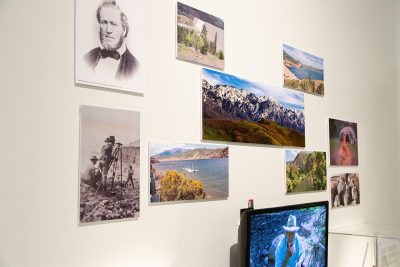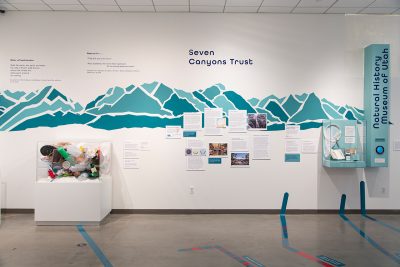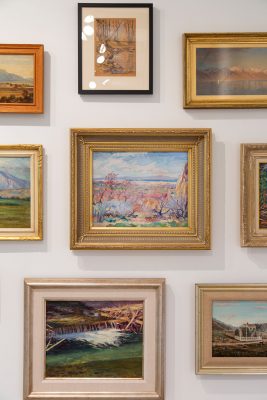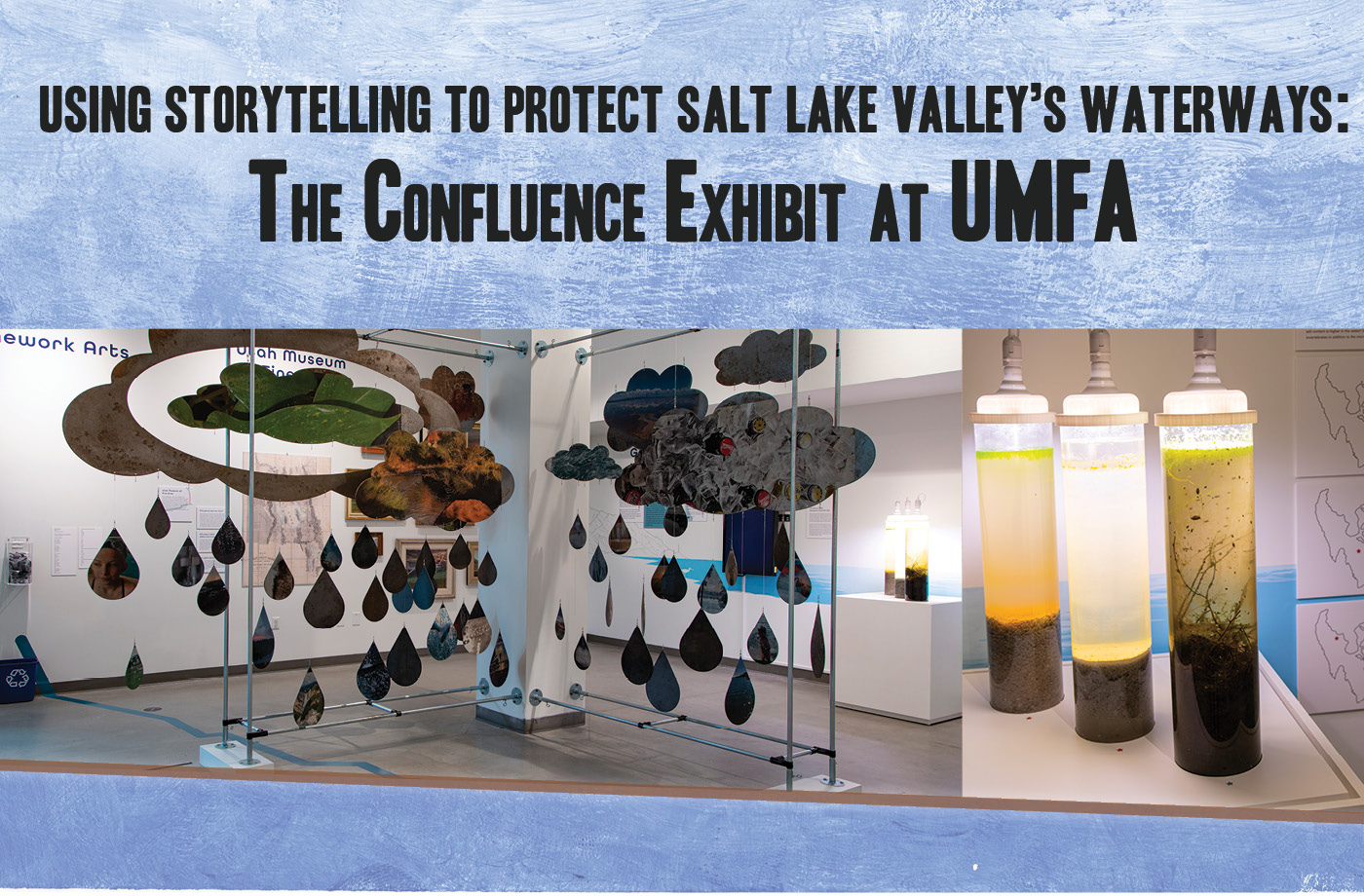Using Storytelling to Protect Salt Lake Valley’s Waterways: The Confluence Exhibit at UMFA
Art
The Utah Museum of Fine Arts (UMFA) is hosting Confluence, an exhibit that critically examines the impact water has—environmentally, culturally and historically—on the state of Utah. Through audio and visual storytelling, UMFA invites others to tell their stories and deeply consider the power water has on the Salt Lake Valley. The exhibit calls on six local groups—Ute Spiritual Leader Larry Cesspooch, saltfront, Seven Canyons Trust, the Natural History Museum of Utah, the Great Salt Lake Institute at Westminster College and Framework Arts—to examine the essential component of water through their unique and vital lenses.

Frank Anthony Smith’s 1976 piece “Some’r Nights and Some’r Days” stands at the head of the gallery to introduce the exhibit as a whole. Smith paints a meta-scene with canvassed edges stitched together by thin needles and rocks to weigh the whole thing down. The lava-engulfed leaves hang over concrete slabs to demonstrate the fragility of man-made infrastructures overtop the nature it’s replaced. As the intro piece to the exhibit, Smith alludes to the ways in which our role in global warming has affected nature’s course and our relationship to it.
As the viewer walks toward the rest of the exhibit, soft piano chords, calls of American avocets and the rush of an unseen creek come into audial focus. Cesspooch inculcates the main gallery in the short film Water. “Water is full of life, without this water we don’t exist,” Cesspooch says as he offers tobacco to the four directions besides a rushing creek. The gallery is then positioned to take the viewer counterclockwise—to begin the exhibit with the ancestral perspective of the Shoshone, Paiute, Goshute and Ute Tribes against the colonized version we see today.

“Water is full of life, without this water we don’t exist.”
A web of red and blue tape guides the viewer further into the exhibit to stand over the since-buried creeks. The creeks are labeled with both the original, Native-given names and the European-American ones they were replaced by. The Seven Canyons Trust began uncovering these impaired creeks in 2014 at the University of Utah—a mission that is planned to last a century. Above the web hangs an ever-shifting steel art piece designed to look like clouds with falling raindrops. Images of people enjoying recreational water activities reflect on one side, while blank steel reflects on the other. The multi media piece “Water” incorporates an audial component through which storytellers share the meaning of water in their lives and the ways in which we must take conservatory action to preserve these memories.
The gallery closes with pieces from Eric Robertson. A rectangular glass case is filled to the brim with empty take-out containers, gallon water jugs, straws and plastic sleeves in “Plastic debris collected 16 July 2020 through 23 October 2020.” The piece prompts viewers to question if the non-biodegradable, single-use plastic is worth the degradation of Utah’s ecosystems and waterways.

“The creeks are labeled with both the original, Native-given names and the European-American ones they were replaced by.”
From environmental, Native, anecdotal and scientific perspectives, Confluence not only asks Utahns to examine how water is embedded in personal identity, but also how our identity cannot exist without water. With the help of the literary journal saltfront, the exhibit hopes to inspire monumental ecological transformations on the planet and in the Salt Lake Valley through ecological storytelling. The University of Utah and UMFA express commitment to “…a partnership with Native Nations and Urban Indian Communities through research, education and community outreach activities.”
The exhibit runs Feb. 18, 2021 to Dec. 4, 2021 at the University of Utah’s fine art museum. Tickets can be reserved online and the exhibit can be seen Wednesdays 10 a.m.–8 p.m. and Thursdays–Saturdays 10 a.m.–5 p.m.

